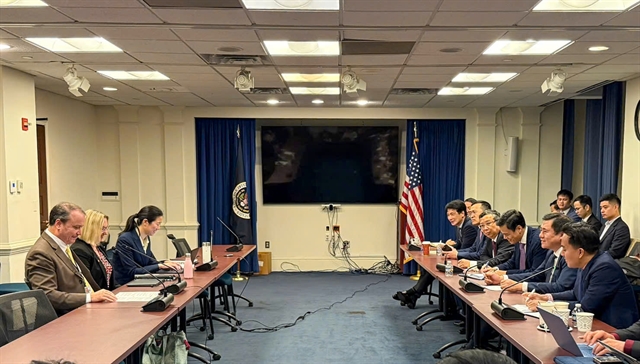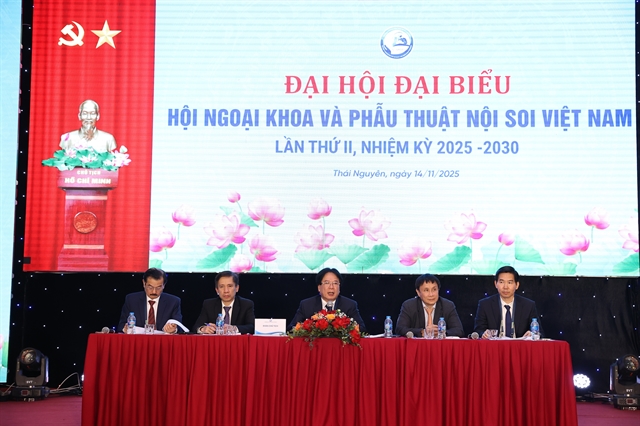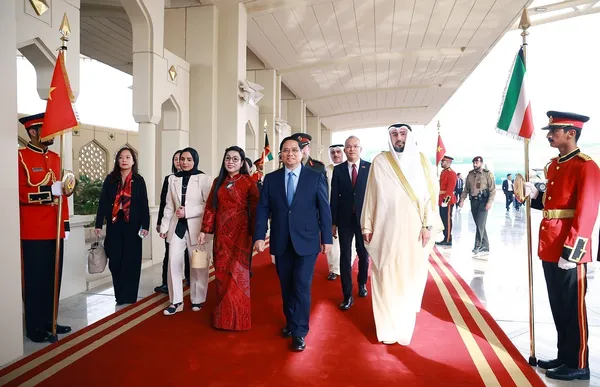 Economy
Economy

 |
| International tourists in the central province of Thừa Thiên-Huế. — VNA/VNS Photo |
HÀ NỘI — Domestic travel firms are still hungry for visitors despite the significant increase in foreign travellers to Việt Nam.
That is a paradox of the Vietnamese hospitality sector, insiders have said.
According to tourism experts, a large number of foreign visitors do not book package tours or rarely use services provided by travel agencies except small-valued ones. That results in the low profitability of Vietnamese travel agencies.
Võ Việt Hòa, director of the Outbound Tourism Division of Saigontourist Travel Services, said statistics indicated a rise in South Korean visitors to Việt Nam. However, Vietnamese businesses have yet to benefit from this surge because they fail to provide comprehensive package services. For example, Saigontourist only offers car rental services which is called a 'difficult' segment.
Regarding Japanese tourists, they are tightening their budgets, and Việt Nam is not their top choice destination. Similarly, Chinese tourists are shifting away from Southeast Asian countries, including Việt Nam, in their travel preferences, Hòa said.
The current visa policy is already quite relaxed but should be made even more appealing. Thailand, Malaysia, and Singapore have waived visas for Chinese tourists, so Hòa said Việt Nam should have similar visa exemption policies for tourists from key markets.
Chairman of the Vietnam Tourism Association Vũ Thế Bình said while the overall numbers are rising, a significant increase in tour bookings has not been seen.
Bình said Việt Nam has all the conditions in terms of natural resources, environment and other factors to develop tourism but this sector has failed to develop remarkably.
In the last two decades, Korean and Japanese tourists have pursued their distinct preferences, while there has been a moderate resurgence in Chinese visitors, though not substantial. Affordable tours for Chinese tourists have made a comeback.
Bình emphasised the importance of developing suitable products to attract tourists, which requires appropriate policies.
He added that many localities that host festivals have confused between attracting domestic and international visitors. Foreign travellers do not have enough time and attention to participate in festivals that localities are organising everywhere, therefore, it is necessary to have a national tourism promotion strategy.
At the same time, localities need to set aside funds to carry out promotion campaigns under that strategy to attract international visitors, Bình said.
Meanwhile, Hòa suggested the launch of tourism promotion offices in Europe, America, ASEAN, and China. These offices will help better promote the country's hospitality sector and attract international visitors to Việt Nam.
The country's tourism sector served over 6.2 million foreign visitors and 40.5 million domestic tourists over the first four months of this year, earning VNĐ271.4 trillion (nearly US$10.7 billion) in revenue, according to the Vietnam National Authority of Tourism (VNAT).
The number of international visitors increased by 68.3 per cent over the same period in 2023, statistics showed.
South Korea remained the largest foreign tourist source with 1.6 million arrivals, accounting for 25.8 per cent of the total international arrivals in Việt Nam. It was followed by mainland China, Taiwan, the US and Japan.
The number of Asians coming to Việt Nam soared 77.2 per cent year-on-year, making Asia the leading regional source of visitors. At the same time, tourists from Europe continued to rise strongly thanks to the favourable visa policy applied since August 15, 2023, including such main markets as the UK (35.2 per cent), France (41.7 per cent), Germany (36.9 per cent), Italy (77.4 per cent), Spain (48.5 per cent), and Russia (74 per cent). — VNS




